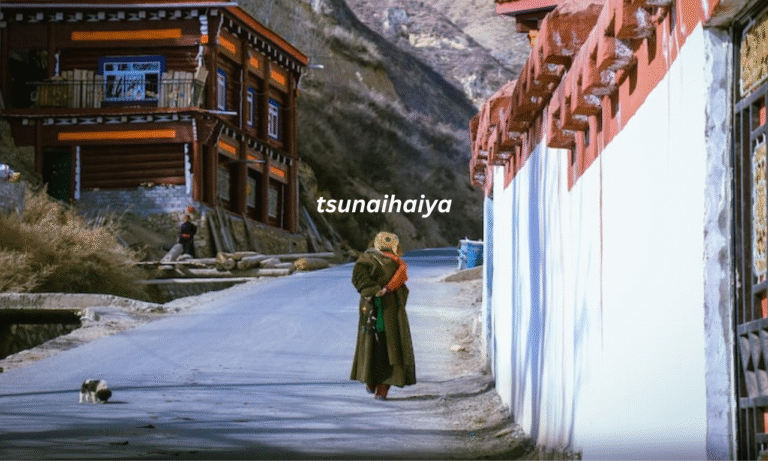I still remember the first time I stumbled upon Tsunaihaiya. It wasn’t in a classroom, or through a book, but during a small cultural gathering where a group of performers filled the air with songs, chants, and clapping rhythms. At first, I had no clue what was going on—I just knew I was captivated. Everyone around me seemed to know their part, voices weaving together in harmony that felt both ancient and alive. That’s when I decided to dive deeper into what Tsunaihaiya really means, and honestly, it’s been one of the most fascinating journeys into tradition and human connection I’ve experienced.
In this blog, I’ll share what I’ve learned about Tsunaihaiya—its roots, its meaning, and why it resonates even today. I’ll also sprinkle in some of my personal takeaways and tips if you’re curious to explore it yourself.
What is Tsunaihaiya?
At its heart, Tsunaihaiya is more than just a chant or a song—it’s a cultural practice rooted in rhythm, teamwork, and storytelling. It often appears in festivals, rituals, or community gatherings where music, movement, and voice all blend together. Some describe it as a chant-song, others see it as a way of keeping history alive through performance.
What fascinated me most was how Tsunaihaiya creates an instant sense of unity. No matter who you are, once you join in—clapping, stomping, or echoing the words—you feel like you’re part of something bigger.
Why Tsunaihaiya Still Matters Today
In a world where so much is digital, you might wonder why something so traditional still draws people in. For me, there are three main reasons:
-
Connection – Singing or chanting together breaks barriers. It’s impossible to feel alone when your voice merges with a crowd.
-
Cultural Preservation – Every time Tsunaihaiya is performed, it carries forward traditions that could otherwise fade into history.
-
Energy and Healing – There’s something therapeutic about rhythm. The repetitive beats, the rising and falling voices—it almost feels meditative.
I remember one evening when I joined a circle of people performing Tsunaihaiya. I came in stressed and distracted, but by the end, I felt lighter. It was like my worries had been carried away on the rhythm.
My First Real Experience with Tsunaihaiya
To be honest, I was nervous about joining in at first. I didn’t want to mess it up or look out of place. But one of the elders guiding the chant smiled and said, “Just follow the rhythm—you’ll learn as you go.” And he was right.
The beauty of Tsunaihaiya is that it doesn’t require perfection. It’s about presence. You clap when others clap, you repeat the words, and before you know it, you’re inside the flow.
That night, I walked away with two important lessons:
-
Don’t overthink participation. Sometimes you just need to jump in and let yourself feel the rhythm.
-
Tradition is meant to be shared. The people I met weren’t gatekeeping their culture; they were eager to pass it along.
How Tsunaihaiya is Performed
Although variations exist, most Tsunaihaiya performances share common elements:
-
Call and Response: A leader chants a line, and the group responds.
-
Rhythmic Clapping or Stomping: Hands and feet become instruments.
-
Repetition: The same patterns are repeated, almost like waves rolling onto shore.
Sometimes instruments are added, but the core magic comes from voices and bodies in motion.
Tips if You Want to Experience Tsunaihaiya
If you’re curious about diving into this tradition, here are a few tips based on my own journey:
1. Start by Listening
Before you jump in, spend some time just listening. You’ll notice how the rhythm builds and how each response complements the call.
2. Join a Local Cultural Event
Many festivals, especially ones focused on traditional arts, often include performances of Tsunaihaiya. Don’t just watch—ask if you can join. Most groups welcome newcomers with open arms.
3. Embrace the Imperfection
Your claps might be off-beat at first, or your voice may crack. That’s fine! The spirit of Tsunaihaiya lies in collective energy, not flawless technique.
What Tsunaihaiya Taught Me About Life
Beyond the chants and claps, Tsunaihaiya has left me with some powerful life lessons:
-
Unity Over Individuality: Sometimes the best feeling comes from blending into the group instead of standing out.
-
Power of Repetition: Just like in life, repeating small actions creates lasting impact.
-
Being Present: When you’re in the middle of a chant, there’s no room for distraction. You’re fully in the moment.
These lessons continue to shape how I approach challenges, relationships, and even work.
Related Cultural Practices
If Tsunaihaiya sparks your curiosity, you might also enjoy exploring related traditions:
-
Call-and-response singing in African music – where communities pass down stories and wisdom.
-
Taiko drumming in Japan – another rhythmic practice that blends energy with group performance.
-
Gregorian chants in Europe – though different in tone, they also use repetition and unity of voice.
Each of these, like Tsunaihaiya, shows how deeply humans crave connection through rhythm.
Wrapping Up: Why Tsunaihaiya Deserves Your Attention
So, what’s the big takeaway? For me, Tsunaihaiya isn’t just an old cultural practice—it’s a living reminder of how humans are wired for connection, rhythm, and shared energy.
If you ever get the chance to witness or join a Tsunaihaiya performance, do it. Don’t worry about being perfect. Don’t hold back. Just let yourself be swept into the rhythm. You’ll walk away not just entertained, but uplifted.

